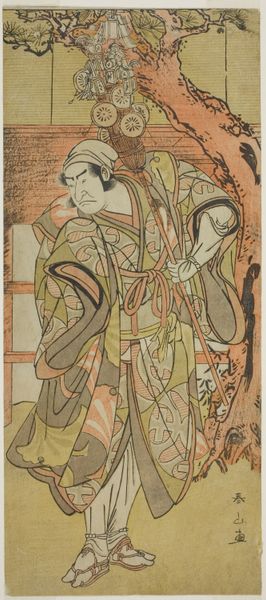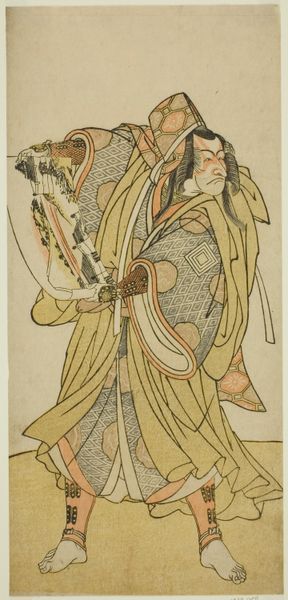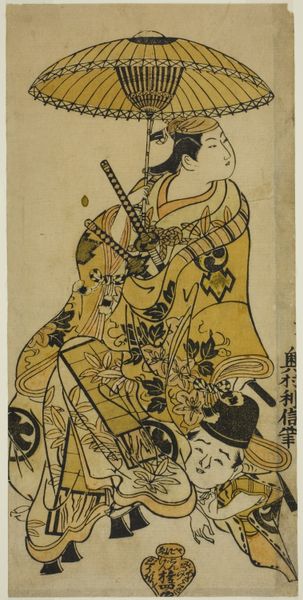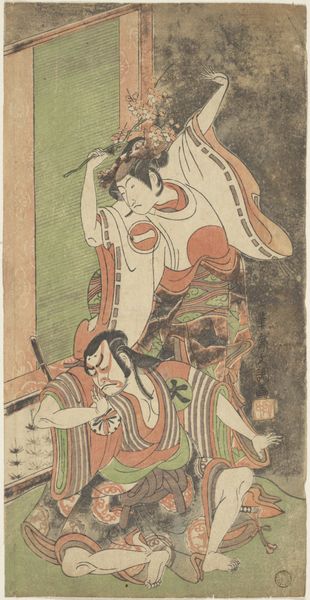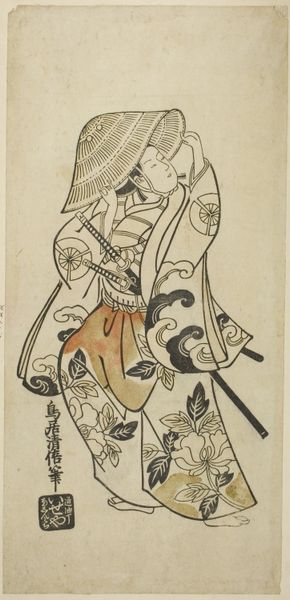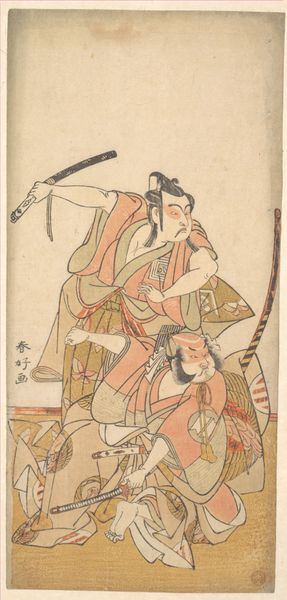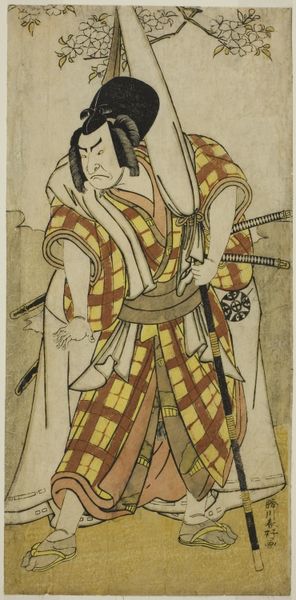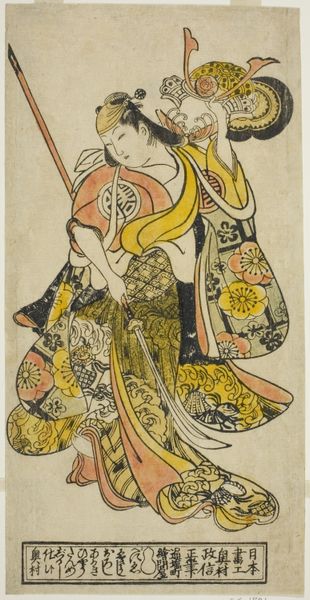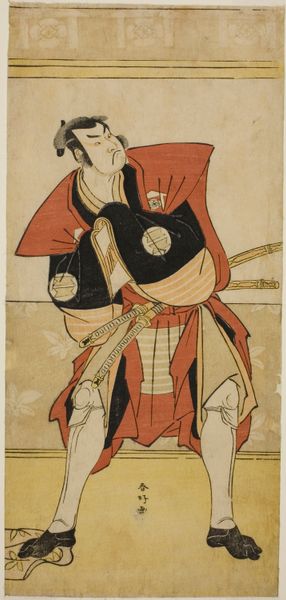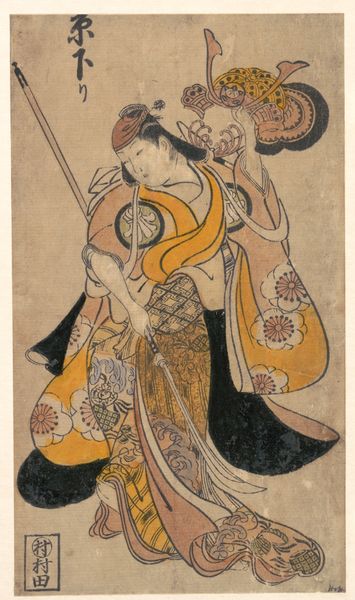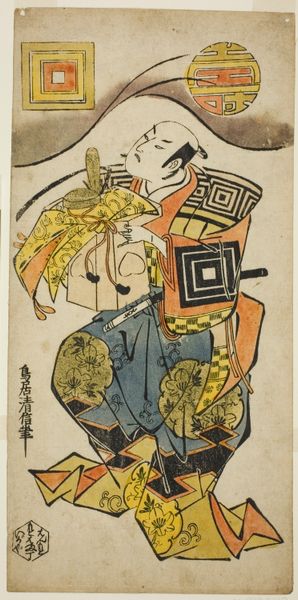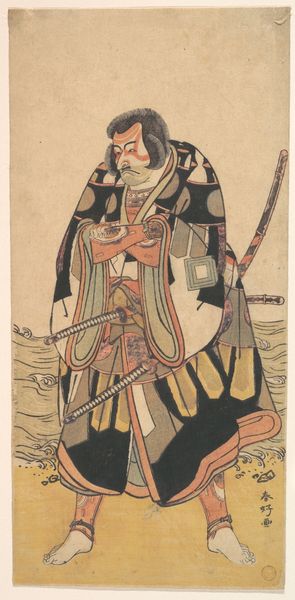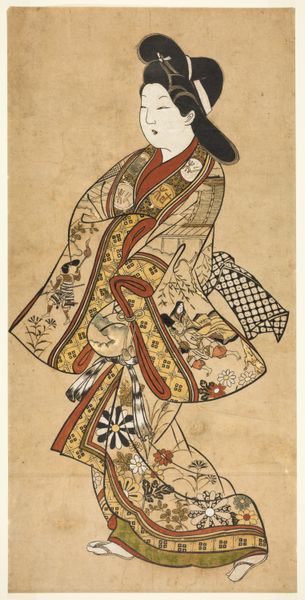
Bando Mitsugoro I in the Role of Asahina no Saburo, Drama "Sono Kyodai Fuji no Sugatami" 1776
0:00
0:00
print, woodblock-print
#
portrait
# print
#
asian-art
#
ukiyo-e
#
japan
#
figuration
#
woodblock-print
#
history-painting
#
sword
Dimensions: H. 12 1/2 in. (31.8 cm); W. 5 3/4 in. (14.6 cm)
Copyright: Public Domain
Editor: Here we have Katsukawa Shunko's "Bando Mitsugoro I in the Role of Asahina no Saburo, Drama 'Sono Kyodai Fuji no Sugatami'," created as a woodblock print in 1776. I’m struck by the figure's commanding presence despite the somewhat muted colors. What aspects of this ukiyo-e print grab your attention? Curator: What immediately stands out to me is how this work challenges traditional representations of power. Bando Mitsugoro I, a celebrated Kabuki actor, is depicted playing a historical figure. But consider this: how does portraying a man *playing* a man complicate notions of masculinity and heroism within 18th-century Japanese society? The theatrical nature itself becomes a commentary. Editor: That's interesting, because I hadn’t really considered the layers of performance embedded within the image itself. Curator: Exactly. It's crucial to explore Kabuki's role as a space for social commentary. The actors, often from marginalized communities, were able to critique social hierarchies through their roles. And who was consuming this art? This print circulated among a growing urban class, reflecting and shaping their values. Does the actor's gaze, slightly averted, suggest anything about the artist’s, or even society's, attitude towards fame and the portrayal of idealized masculinity? Editor: Perhaps it hints at a certain subversiveness, a challenge to the rigid social norms of the time? The choice of a Kabuki actor suggests an understanding of performance as a form of both entertainment and social critique. Curator: Precisely. It encourages us to unpack how performance can be a potent tool for negotiating identity and power, both on stage and in society at large. Seeing art like this reminds me how valuable historical context is. Editor: Definitely. I’ll never look at historical artworks in the same way again.
Comments
No comments
Be the first to comment and join the conversation on the ultimate creative platform.
